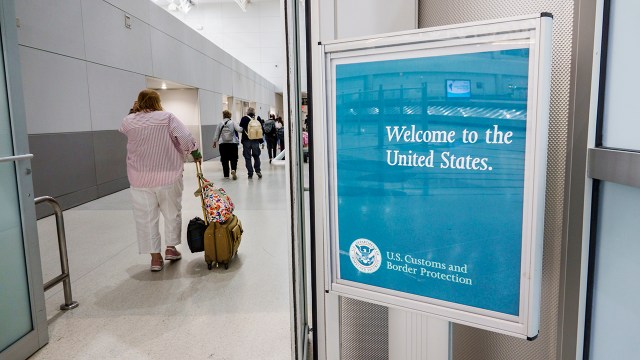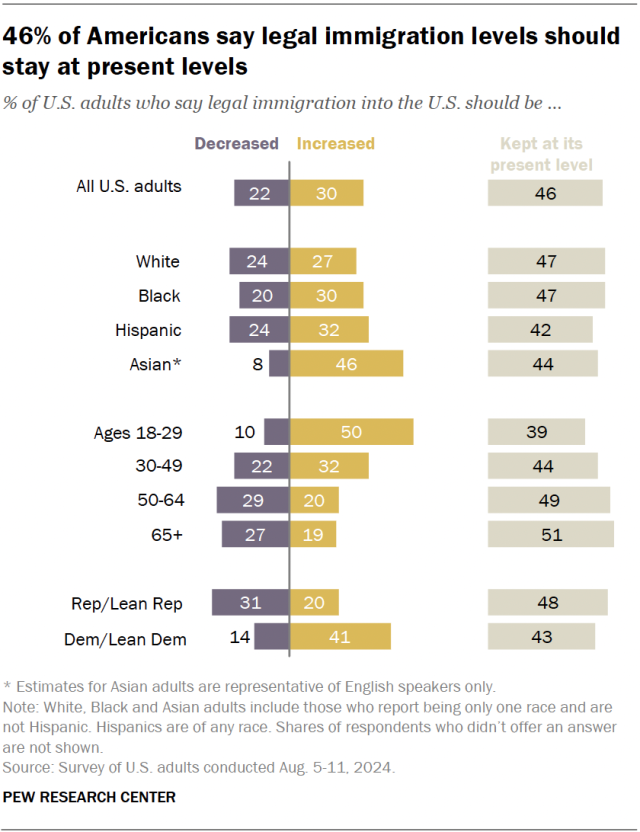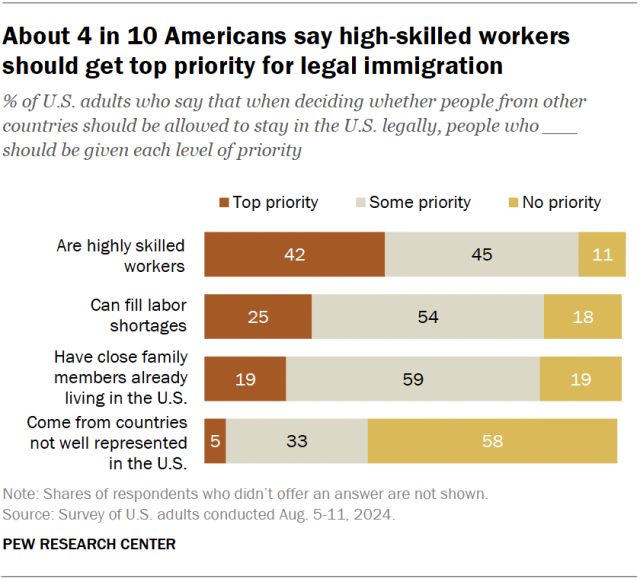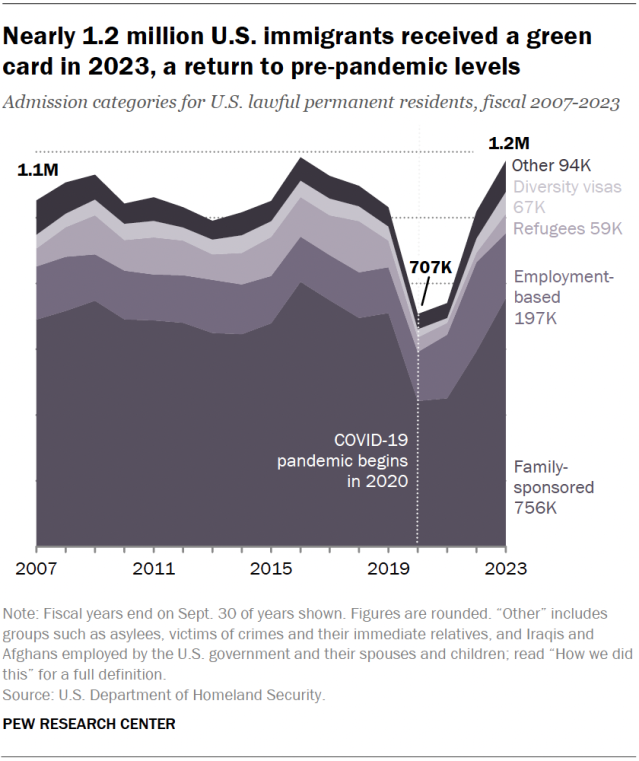
Nearly half of U.S. adults say legal immigration into the United States should be kept at present levels. Fewer say it should be increased or decreased, according to a Pew Research Center survey conducted in August 2024.
Each year, about 1 million immigrants receive legal permanent residence (a green card) and are legally admitted to the U.S. Most of them are eligible because they have family already in the country.
Other immigrants receive temporary visas to work in sectors such as technology and agriculture.
The incoming Trump administration’s approach to legal immigration policy remains to be seen. Meanwhile, the technology sector is lobbying for the country to admit more high-skilled immigrant workers.
Pew Research Center conducted this analysis to examine registered voters’ views of how immigration has impacted the U.S. job market. This analysis is based on a survey of 9,201 adults – including 7,569 registered voters – from Aug. 5 to 11, 2024, before the 2024 presidential election.
Everyone who took part in the survey is a member of the Center’s American Trends Panel (ATP), a group of people recruited through national, random sampling of residential addresses who have agreed to take surveys regularly. This kind of recruitment gives nearly all U.S. adults a chance of selection. Surveys were conducted either online or by telephone with a live interviewer. The survey is weighted to be representative of the U.S. adult population by gender, race, ethnicity, partisan affiliation, education and other factors. Read more about the ATP’s methodology.
Here are the questions used for this analysis, the topline and the survey methodology.
Admission categories for lawful permanent residents include family-sponsored, employment-based, refugees, diversity visas and other. “Other” includes asylees; victims of crimes and their immediate relatives; Iraqis and Afghans employed by the U.S. government and their spouses and children; cancellation of removal; victims of human trafficking; people admitted under the Haitian Refugee Immigration Fairness Act or the Nicaraguan Adjustment and Central American Relief Act; children born abroad to noncitizen residents; and parolees. Annual data is from various years of the Yearbook of Immigration Statistics, especially Table 6.
Some Americans are more likely than others to support increasing legal immigration:

- 50% of Americans ages 18 to 29 say legal immigration should be increased, compared with 20% of those 50 and older.
- 41% of Democrats and Democratic-leaning independents say legal immigration should be increased, compared with 20% of Republicans and Republican leaners.
- 46% of Asian Americans say legal immigration should be increased. This is a higher share than among White (27%), Black (30%) and Hispanic (32%) adults.
What do Americans think about illegal immigration?
A majority of Americans support enforcing mass deportations. However, most also say undocumented immigrants should have a way to stay in the country legally if certain requirements are met.
Read more on how Americans view undocumented immigrants.
Americans’ views on legal immigration priorities
Americans say high-skilled workers should get priority over other immigrants for legal admission:

- 42% say highly skilled workers such as scientists, doctors, nurses and computer programmers should be given top priority to legally immigrate to the U.S.
- 25% say people who fill labor shortages such as agricultural workers, home health aides and child care workers should be given top priority.
- 19% say people who have close family members already living in the U.S. should be given top priority.
By contrast, only 5% say people who are not well represented in the U.S. population should be given top priority to legally immigrate. In fact, most Americans (58%) say this group should not be given any priority.
Legal immigrants in the U.S.

Overall, 47.8 million immigrants lived in the U.S. in 2023, with the vast majority living in the country legally.
About 1.2 million immigrants received a green card in 2023. This was up by about 155,000 from 2022. Since 2007, about 1 million or more immigrants have received a green card every year, except during the coronavirus pandemic.
Most immigrants receive a green card through family ties. In 2023, about 756,000 immigrants got their green cards through family sponsorship, which typically requires them to have a close family member with U.S. citizenship. Another roughly 197,000 received employment-based green cards, which generally go to foreign workers who are highly skilled or fill labor shortages. And about 67,000 were admitted on diversity visas from countries that aren’t well represented in the U.S.
Temporary visas
Immigrants can also work legally in the U.S. for short periods of time through temporary visas. In 2023, about 755,000 highly skilled immigrants received H1B visas, which generally must be renewed within one to three years. About 719,000 H2A visas were approved for short-term seasonal agriculture work. These exceeded totals from before and during the pandemic. In 2019, the U.S. issued about 602,000 H1B visas and 443,000 H2A visas.
Note: Here are the questions used for this analysis, the topline and the survey methodology.

